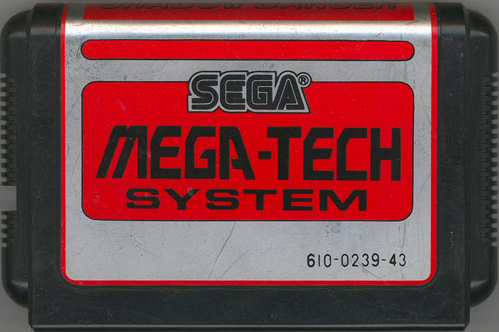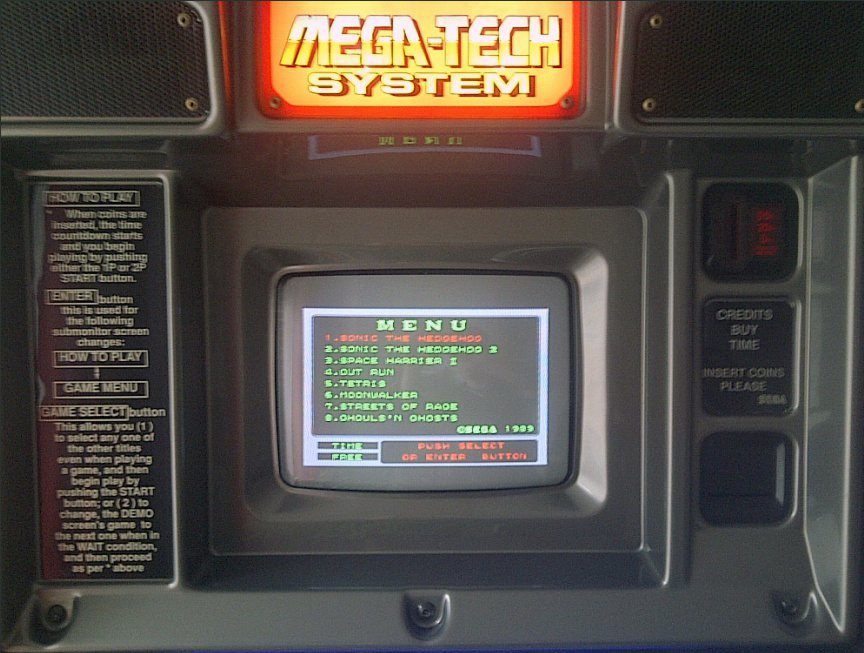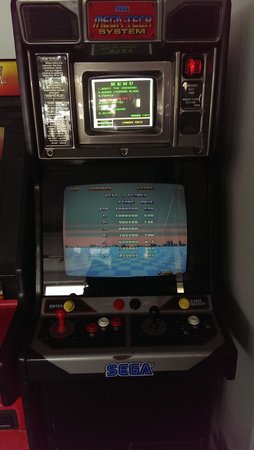Many people remember the multi-game arcade machine Neo Geo but few recall the system that appeared in arcades a year earlier, powered by Sega’s own Mega Drive technology. That system was the Sega Mega-Tech and today we are going to take a look at this oddity in the history of gaming.
Multi-game arcade machines were nothing new in 1989. Nintendo had seen a reasonable amount of success since 1986 with its PlayChoice-10 machine; which allowed gamers to play a selection of up to ten different NES games on a two-player arcade machine.
Since Sega absolutely couldn’t let their nemesis have a slice of pie without them getting some as well, especially when Sega absolutely dominated over Nintendo in mid-to-late Eighties arcades, they had to have a multi-game arcade machine of their own. Enter the Mega 6, a machine that allowed players to play a selection of up to six time-limited Mega Drive games on a two-player arcade machine.
The games available were rather limited for the Mega 6 and featured arcade-style games or outright Mega Drive conversions of arcade games such as Space Harrier II, OutRun, and Alien Syndrome; as well as Sega’s Mega Drive version of Tetris. For the most part, you could play a bigger and better version of these games on their own arcade machines but the draw of the Mega 6 was that they were all there in one machine.
The Mega 6 never arrived in the West; we instead got an eight-game arcade system called the Mega-Tech. It was ostensibly the same machine, just with the capacity to hold two more games. As with the Mega 6, the Mega-Tech allowed players to play for a limited amount of time (the default was 1 minute per credit, which is nothing short of atrocious).
In contrast to Nintendo’s machine, which required game to be installed in circuit board format, the Mega-Tech used cartridges that would be slotted into position inside the machine; a design choice that the Neo Geo also used. However, Sega made it so that Western Mega Drive games couldn’t simply be bought in shops and stuck into the machine, because the Mega-Tech requires Japanese-style cartridges; which have a slightly different shape to the PAL Mega Drive carts. That didn’t stop companies making converter devices to allow arcade owners to stuff extra games into the machine that weren’t available in Mega-Tech format, of course.

The cartridge shape also meant Mega-Tech cartridges would not fit into a European Mega Drive; but that was less of an issue than going the other way around, since Mega-Tech cartridges contain piggybacked code that makes them incompatible in a different way to just their shape. This code is for a second display.
The Mega Tech arcade machine has a normal arcade-style display screen, which is used for playing the games and which will show the player the same video output as a standard Mega Drive game would, and it also contains a second, smaller, monitor above the main screen.

This monitor only displays the list of games available in the Mega-Tech arcade; with those titles coming from data being transmitted by the cartridges. Because of this extra data, Mega-Tech cartridges are not fully compatible with home Mega Drives even if a Japanese-to-PAL converter is used to get the cartridge to fit into the machine.

The list of Mega-Tech titles was small and focussed primarily on Mega Drive conversions of Sega arcade titles, as with the Mega 6. Games such as Golden Axe, The Revenge of Shinobi, Thunder Force II and Tetris came to the machine early, while Sonic the Hedgehog, Sonic 2, Moonwalker and even some conversions of Master System titles (because hey, why not?) arrived later.
Players could switch between the games after getting a “game over”, if they had any play time left on their credits. Because of this, the main attraction of the Mega-Tech is quite obvious: it’s a useful “try before you buy” system for anyone who fancies giving a few Mega Drive games a go.
Of course, this would also be possible if you went to a video rental shop and hired a Mega Drive game, so the actual market for this kind of arcade is somewhat limited. That didn’t stop the machine being enough of a success for Sega to repeat it with a sequel multi-game arcade machine, the Mega-Play, but that’s a story for another day.
